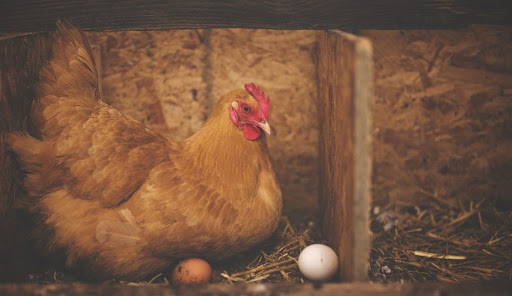The ancient Egyptians were known to be master builders, having built the pyramids and other wondrous architecture. Their expertise can also be seen in the ingenious egg hatching system that they invented 2,000 years ago and is still in use in rural regions called egg ovens.
The egg ovens
The first mention of Egypt’s egg ovens can be found in the writings of Greek thinker Aristotle and historian Diodorus Siculus. Both marveled at the system that the Egyptians used to artificially incubate eggs. Siculus particularly mentions in his Library of History that the Egyptians raise chickens “in numbers beyond telling.” An average Egyptian egg oven could hatch up to 4,500 fertilized eggs in those times, which was nothing short of a wonder for foreigners.
Egyptians kept the workings of the egg ovens a closely guarded secret. It was in 1750 that French entomologist Rene Antoine Ferchault de Reaumur demystified the egg ovens. In Europe, farmers could only hatch chicks during summer and spring since the hens were unable to warm the eggs in the cooler months. In contrast, Egyptians were able to hatch eggs all year round. Reaumur tried to replicate the Egyptian egg oven back home in France. However, he failed due to the colder climate.
After the electric incubator was invented, European fascination with Egyptian egg ovens faded out. It was decades later in 2006 that a group of experts once more took a closer look at the Egyptian egg ovens. To their surprise, they found that these ovens were still being used by locals. The ovens had two wings separated by a central corridor, with each wing having two-tiered chambers in five sets. The fertilized eggs were placed in the lower tier, warmed by the fire in the upper tier. Workers use eyelids to check the temperature of the eggs. In ancient times, dung was used as a source of heat. At present, petrol lamps are used.
“The temperature and the intensity of the fires in the oven are carefully regulated and maintained. Too much heat too often and you kill the eggs. That is why it is important to find that optimum temperature that will closely imitate that of a brooding hen. So the oven masters keep a close watch on the open fires. If the weather is hot — as it often is in Egypt — the fires would be burning only in the mornings and in the evenings, but will be reduced to embers in between. In colder weather, the fires can burn up to four times a day,” according to Ancient Origins. There were roughly 200 traditional egg ovens in Egypt as of 2019. However, their numbers are declining as people shift to modern solutions for hatching.
Fertilized chicken eggs
Fertilized eggs can be considered a miracle of nature since they contain everything that a chick needs to grow up before hatching. One egg contains 5 grams of fat, 7 grams of protein, minerals, vitamins, and several other nutrients that can sustain a chick’s life for up to 23 days. The chicks absorb these things until they hatch from the eggs.
The hen tends to be very sensitive to the chicks. They apparently have ultraviolet vision that allows them to instantly identify the eggs that are viable. The hen also uses her ultraviolet vision to gauge which of the chicks are stronger so that she can devote more time to them.
Follow us on Twitter, Facebook, or Pinterest



